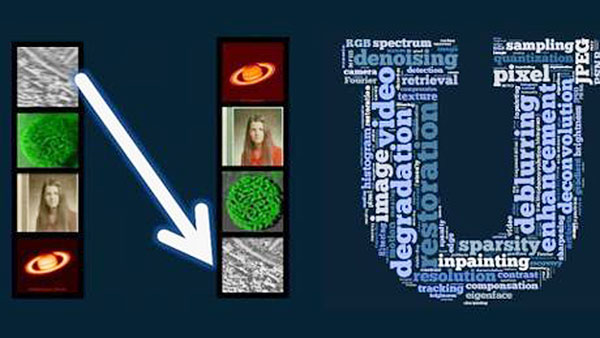 由美国西北大学计算机教授Aggelos Katsaggelos主讲的“数字图像和视频处理基础”即将开课。数字图像处理一直是计算机和通信专业小伙伴的重要专业课,所以特别推荐这门英文课程,3月31日开课, 报名课程概述本课程中你将学到数字图像和视频处理的基本原理和工具,以及如何用它们来解决商业和科研领域中的实际问题。 Digital images and videos are everywhere these days – in thousands of scientific (e.g., astronomical, bio-medical), consumer, industrial, and artistic applications. Moreover they come in a wide range of the electromagnetic spectrum – from visible light and infrared to gamma rays and beyond. The ability to process image and video signals is therefore an incredibly important skill to master for engineering/science students, software developers, and practicing scientists. Digital image and video processing continues to enable the multimedia technology revolution we are experiencing today. Some important examples of image and video processing include the removal of degradations images suffer during acquisition (e.g., removing blur from a picture of a fast moving car), and the compression and transmission of images and videos (if you watch videos online, or share photos via a social media website, you use this everyday!), for economical storage and efficient transmission. This course will cover the fundamentals of image and video processing. We will provide a mathematical framework to describe and analyze images and videos as two- and three-dimensional signals in the spatial, spatio-temporal, and frequency domains. In this class not only will you learn the theory behind fundamental processing tasks including image/video enhancement, recovery, and compression – but you will also learn how to perform these key processing tasks in practice using state-of-the-art techniques and tools. We will introduce and use a wide variety of such tools – from optimization toolboxes to statistical techniques. Emphasis on the special role sparsity plays in modern image and video processing will also be given. In all cases, example images and videos pertaining to specific application domains will be utilized. 授课大纲Introduction, Image and Video Processing vs Image and Video Analysis vs Computer Vision, the electromagnetic spectrum, applications of image and video processing 先修知识The course includes programming assignments and some programming background will be helpful. 授课形式The class will consist of video lectures broken into short (between 10 and 15 minutes long) chunks. Some of these may contain integrated quiz questions. There will also be standalone quizzes that are not part of video lectures, as well as programming assignments. |